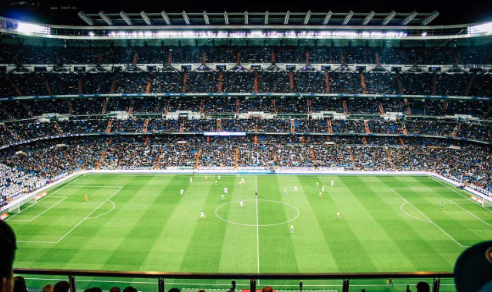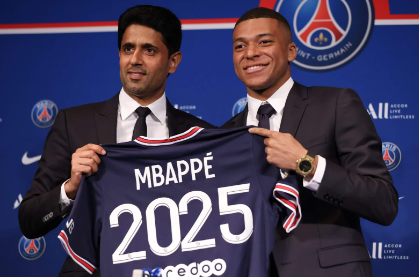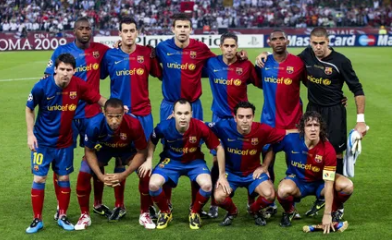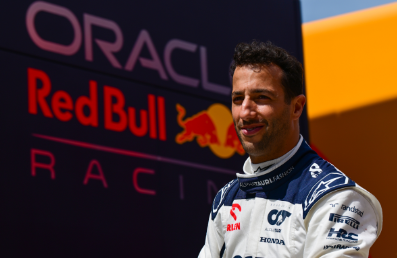Filed under:
Formations are the very foundation of a team and often act as the point of difference in a match. A good formation uses its players in their best positions to create scoring and defensive chances based on the merit of the players. A great formation however not only places players in their best positions but it also creates a cohesive unit. Teams who have found a great formation in the past have absolutely dominated making it no wonder teams are constantly on the hunt for the next best thing. Recently we’ve seen more and more teams pick up a 4-2-3-1 and implement it with a positional play esc style. While this has gone incredibly for some it's become something it was never intended to be; a quick solution.
The 4-2-3-1 first came onto the scene in the 2000’s but lost out to the more popular styles of the time. The formation was born after midfield holes in the 4-4-2 formation became more and more exploited; the formation was created to provide stronger control in the center or midfield. At the time it was largely passed over for formations that better fit with the more popular styles of play. While the strategy came about in the 2000’s it gained its traction more recently, while some teams in the early 2010’s ran the formation its major popularization came when Manchester City adopted the model under Pep Guardiola. City went through an insane rebuilding period that involved the famous coach and the budding formation. After the club found massive success the formation began showing up everywhere.
It’s hard to go more than a few matches without seeing a team using this formation. In the Champions league 9 teams use the formation in at least half of their games. The premier league has the most teams using it with current table leader Tottenham also using the formation, top Bundesliga team Bayern Munich uses the formation. Looking across the top European leagues a large number of clubs from all of them have adopted the 4-2-3-1. The wide success of these clubs isn’t just in goal scoring the open lanes, passing, and defensive fall back has led to a formation that creates visually interesting games.
The benefits to a 4-2-3-1, which have already been touched on, are numerous. Midfield domination has recently become the name of the game whichever team has a stronger midfield is better suited to win the match. By nature this formation allows solid central control and gives room for strong attacking or defending. It’s semi-flexible nature also helps it work well the popular positional play style the shape creates boxes in the midfield and the four man backline allows for a solution to opposition teams overloading the midfield by allowing more players to move into the midfield while still maintaining a defense. An example of the many benefits comes from Tottenham, a team who struggled severely last season, the team runs a 4-2-3-1 and has been in peak form this season. The formation allows for strong attacking, and with a good striker a high amount of goals, while also maintaining lines that give players the room to fall back. A 4-2-3-1 is flexible and easily molds to work against opposition players which is part of the reason it’s so popular.
While there are many benefits to running the formation it isn’t the catchall many clubs are using it as. Clubs like Manchester United and Chelsea have been struggling to perform this season while running a 4-2-3-1. Looking team specific Manchester United clusters together and tends to leave wide open gaps on one side that teams can easily exploit. The club also struggles to complete passes and create productive chances at times it feels almost as though the players have no idea where anyone else on the pitch is. The benefit of flexibility is also the downfall for teams like Manchester United. It takes a long time to be able to get a team to work together in a way that makes this flexibility an asset instead of a hindrance. Strategically speaking the formation can easily become a mess of open gaps if it isn’t looked after properly, another example of this same idea comes from Bayern Munich in the DBF cup which saw them knocked out by a third tier team largely due to gaps in defense. The kings of the 4-2-3-1 themselves have fallen victim to a weak backline in a formation that prioritizes forward and midfield progression.
Another club who has been massively struggling through their season has been Chelsea; the club hasn’t caught a break for a while. While the club is running an offensive and midfield focused strategy their players are nearly all defenders. Chelsea who likes to put their money in everyone else's pockets for two goals a season focuses more on buying than building. Is running probably the worst formation form them. Not only do most of their players have a defensive focus but their roster is a near constant rotating door. The key to having an effective 4-2-3-1 is unity which can’t be achieved if you bring in a new player every other season. Looking back to what makes a good formation the central pillar is using polayers to their fullest ability. Just because Manchester City is doing it doesn’t mean it will work for everyone.
The league who’s fallen most victim to the trending formation is the Premier league with team after team throwing their players into it in a half hearted attempt at strategy. The truth is there is a lot of merit to this budding formation, tactically it’s incredibly sound when used correctly and it allows for the current most effective strategy to be run semi-seamlessly. All that being said, a clubs choice of formation should come from a variety of factors, everything achieved in a 4-2-3-1 can be done in a 4-3-3 and for some clubs they’re far more successful doing it this way. As the old saying goes, would you jump off a cliff if your friends did? Obviously not so maybe it’s time to stop throwing clubs off a cliff just to fit the news footballing trend.




